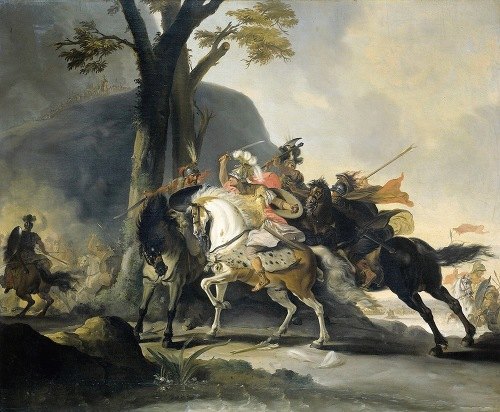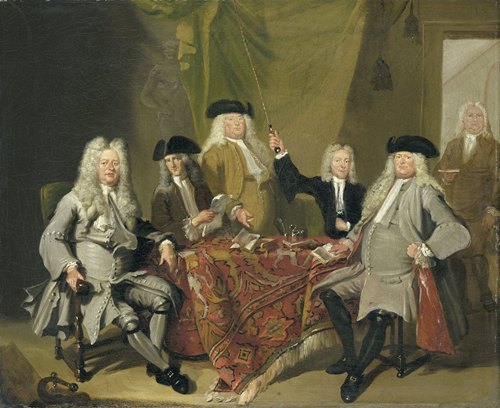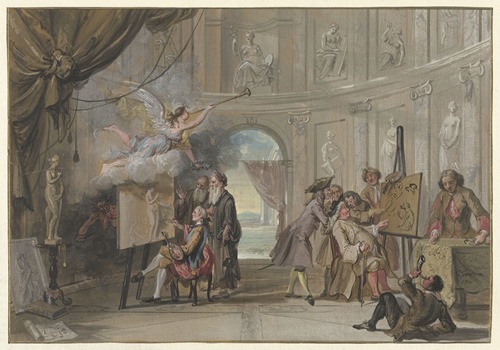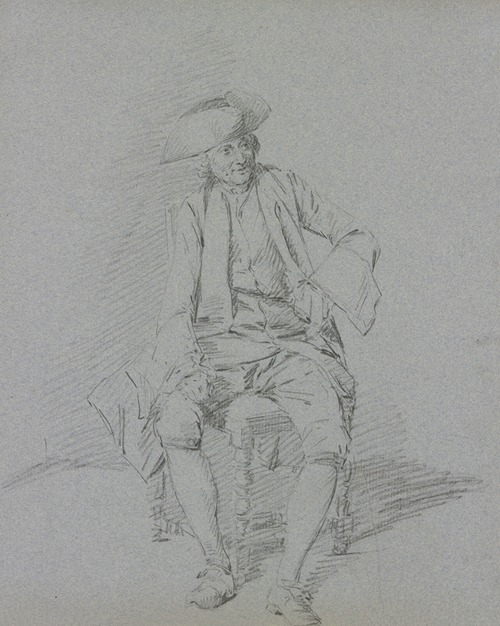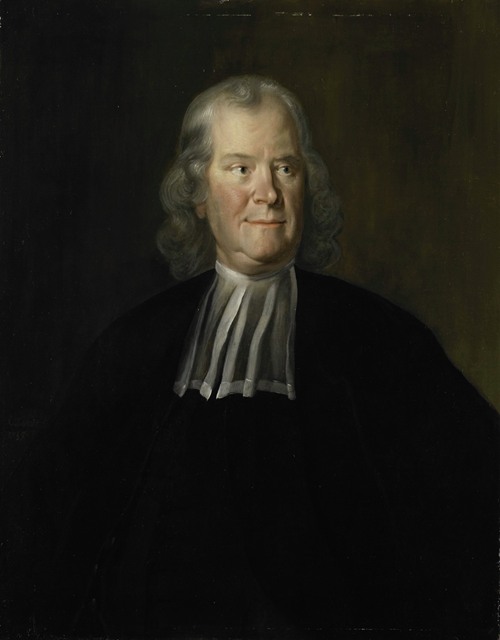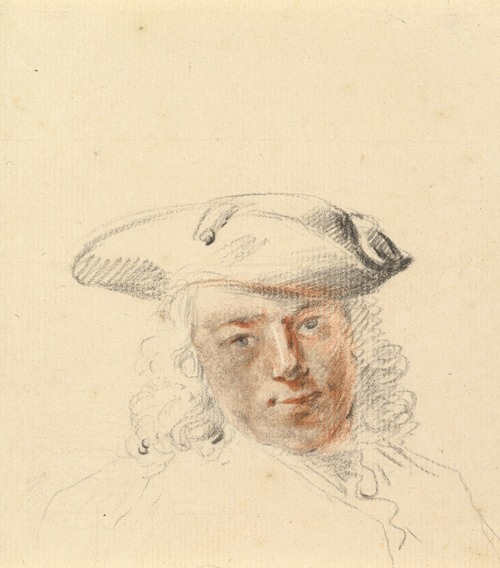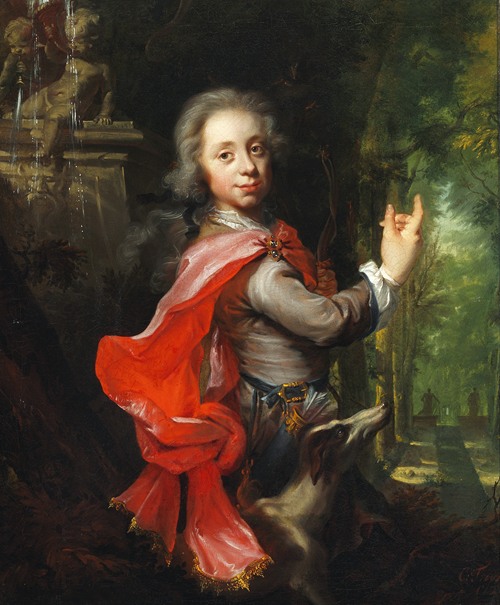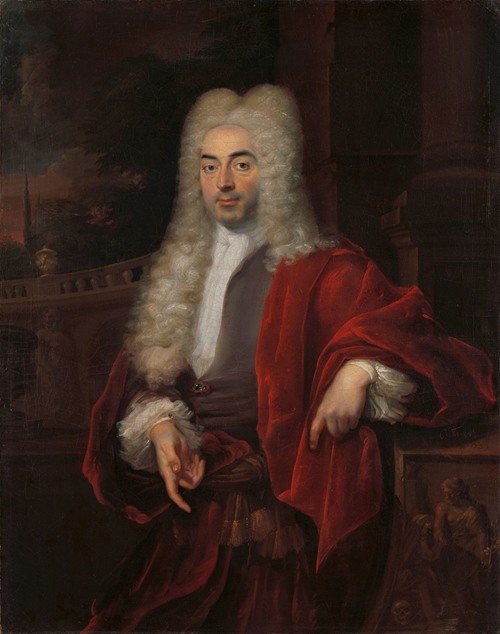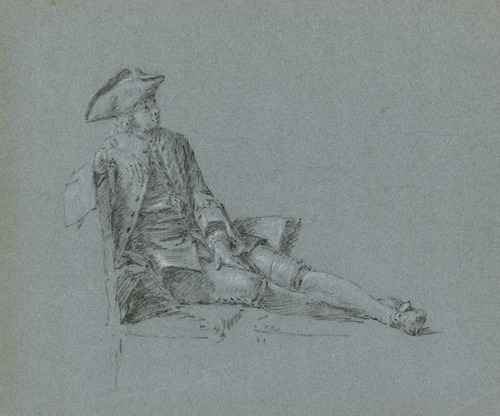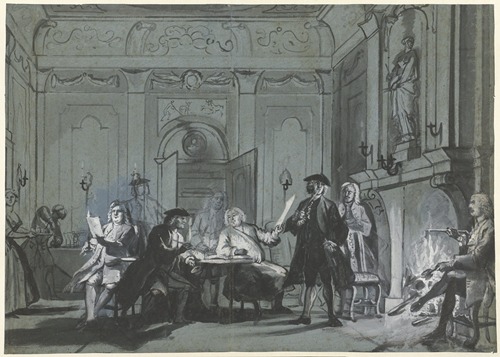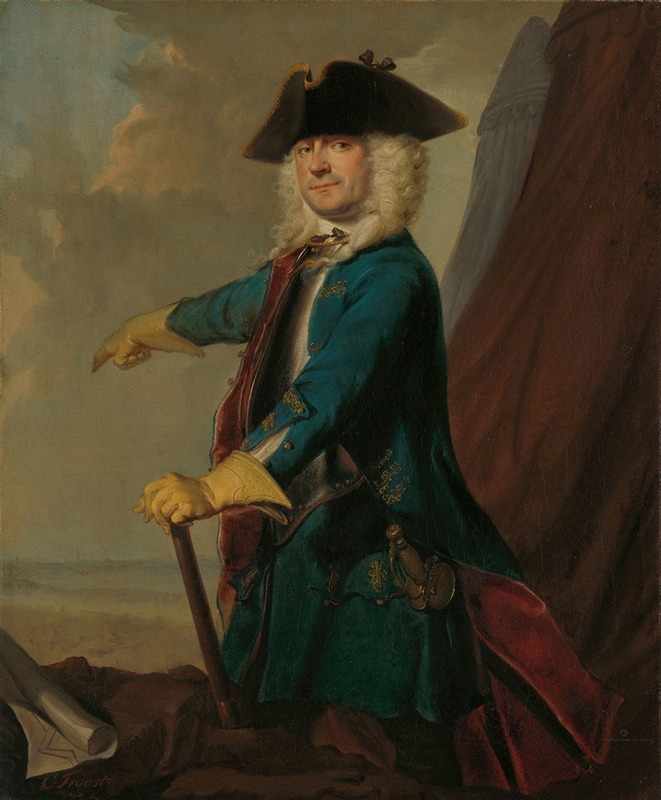

Cornelis Troost was an 18th-century actor and painter from Amsterdam.
Troost was trained as an actor and married the actress Susanna Maria van der Duyn, but became a pupil of Arnold Boonen and gave up his career for painting in 1723.
He is primarily remembered for his works depicting scenes from the Amsterdam Theatre (he also made theatre decorations for plays) and daily life of the upper crust in Amsterdam. One of his earliest drawings dated 1708, is of Prince Eugene of Savoy and the bookseller and spy Louis Renard visiting a chic Amsterdam brothel. Then he had an early success with a lively group portrait depicting the Amsterdam Inspectors of the Collegium Medicum (Rijksmuseum, Amsterdam, 1724). Troost painted portraits, including one of Herman Boerhaave, the famous doctor from Leiden. Troost is known for his paintings of actors in famous roles as well as his witty and elegant Rococo genre scenes. Troost was possibly influenced by William Hogarth, and certainly by French artists such as Watteau, Boucher and Lancret.
His 1736 painting Jeronimus Tonneman and his Son shows the art collector seated in his parlour. He lived on the Keizersgracht, and collected Troost's paintings. It is assumed the book on the table is by Karel van Mander and on the chimney breast Argus and Mercury can be seen. Troost himself lived nearby on the banks of the river Amstel and at Prinsengracht.
A famous work, in his favorite medium of pastel and watercolor, is a five picture series entitled NELRI (Mauritshuis, The Hague, 1740). The name is derived from the first letters of the Latin inscriptions which accompany five views of the activities of a group of men during a night of reunion.
His pupils were Jacobus Buys, Noël Challe, Pieter Tanjé, and his own daughter Sara Troost. He had five daughters and they were all trained in the arts, but only Sara had works engraved by other artists. She married the printer Jacob Ploos van Amstel and another daughter Elisabeth married his brother, the Amsterdam painter Cornelis Ploos van Amstel.

